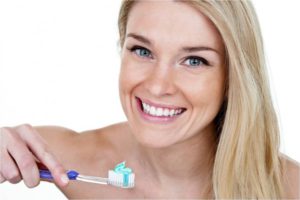Treatment Of TMD
Neuromuscular dentistry uses computerized instrumentation to measure the patient’s jaw movements via Computerized Mandibular Scanning (CMS) or Jaw Motion Analysis (JMA), muscle activity via electromyography (EMG) and temporomandibular joint sounds via Electro-Sonography (ESG) or Joint Vibration Analysis (JVA) to assist in identifying joint derangements. Surface EMG’s are used to verify pre-, mid- and post-treatment conditions before and after ultra-low frequency Transcutaneous Electrical Nerve Stimulator (TENS). By combining both computerized mandibular scanning (CMS) or jaw motion analysis (JMA) with ultra-low frequency TENS, the dentist is able to locate a “physiological rest” position as a starting reference position to find a relationship between the upper and lower jaw along an isotonic path of closure up from the physiologic rest position in order to establish a bite position. Electromyography can be used to confirm rested/homeostatic muscle activity of the jaw prior to taking a bite recording.[citation needed]
Once a physiologic rest position is found, the doctor can determine the optimal positioning of the lower jaw to the upper jaw. An orthotic is commonly worn for 3–6 months (24 hours per day) to realign the jaw, at which point orthodontic treatment, use of the orthotic as a “orthopedical realigning appliance”, overlay partial, or orthodontic treatment and/or rehabilitation of the teeth is recommended to correct teeth and jaw position.
Neuromuscular Dentistry is generally provided in two Phases. Most commonly, the first phase is performed for patients that are symptomatic, usually acute pain such as headaches, etc. Some Phase One patients do not have symptoms, but rather their occlusion or bite needs to be corrected prior to restoring their mouths with crowns, veneers, or NM Functional Orthodontics (often termed an Esthetics case). Phase Two treatment is preferably decided upon PRIOR to embarking on Phase One treatment by the NM Dentist and the patient. Phase Two treatment can be: 1. Continuing to wear the lower orthosis with knowledge that replacements will need to fabricated over time (at patient expense) 2. Restorative Dentistry to the new bite position 3. Neuromuscular Functional Orthodontics 4. Combination of any of the above. There are separate fees for Phase One and Phase Two treatment options.



